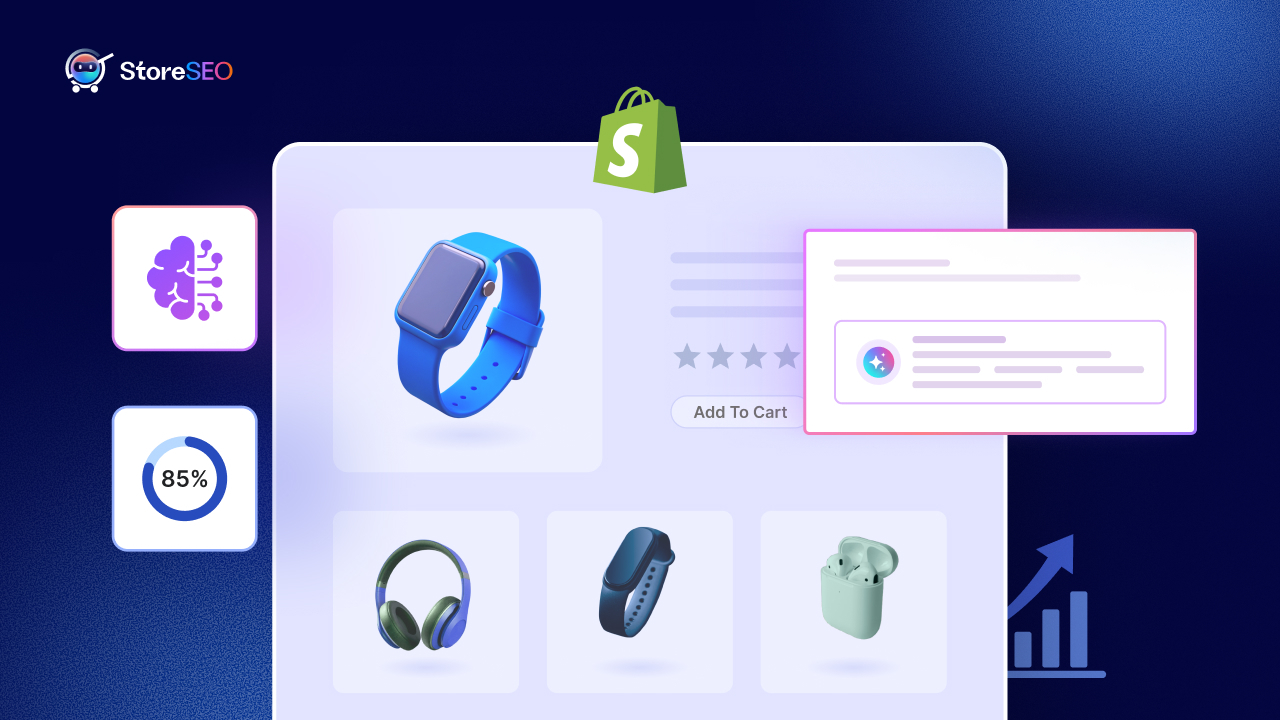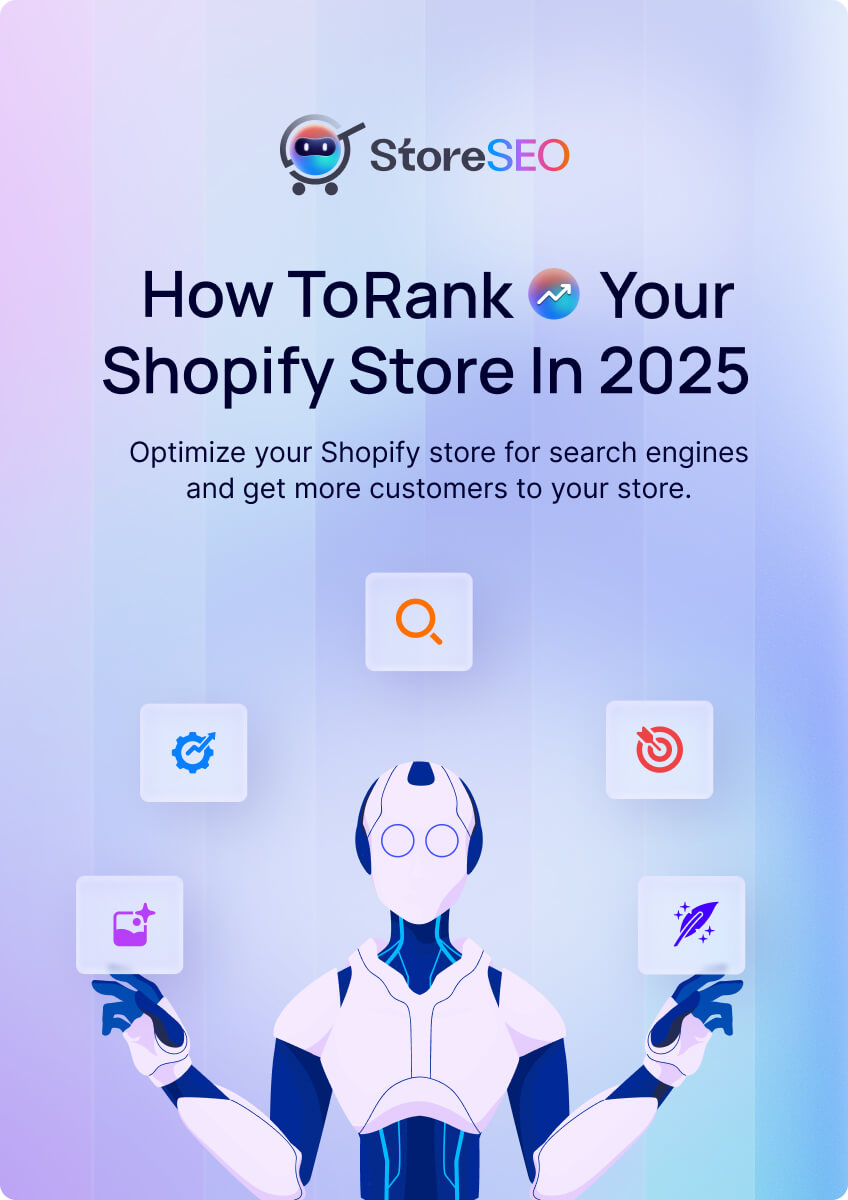If you are a Shopify merchant or just curious about eCommerce, stick around because today, we are diving deep into how generative AI is shaking up conversion rates on Shopify. We will chat about what it all means, why it matters, and how it can help you turn more browsers into buyers. And do not worry, I will keep things simple, with no tech jargon overload here. Let us get started!

How Generative AI on Shopify Boosts eCommerce Conversion Rates
First off, let us make sure we are on the same page. Conversion rates? That is basically the percentage of people who visit your store and actually buy something. If 100 folks drop by and 5 make a purchase, you have a 5% conversion rate. Simple enough. Now, generative AI is a type of artificial intelligence that creates new stuff, like text, images, or even ideas, based on patterns it learns from data. It is not just repeating info. It is generating fresh content. Think of it like a creative robot that helps with writing product blurbs or suggesting outfits to shoppers.
Shopify, being one of the biggest platforms for online stores, has jumped on this AI bandwagon big time. They have tools like Shopify Magic, which uses generative AI to automate a bunch of tasks. Why does this matter for conversions? Well, in the cutthroat world of eCommerce, getting people to click “buy” is tough. Generative AI steps in to make shopping feel personal, fun, and easy, which directly boosts those all-important sales numbers. Studies show it can lift revenue by 5% to 15% through personalized touches. Pretty exciting, huh?
Understanding Generative AI in the Shopify World
Okay, let us break this down a bit more. Generative AI is not some futuristic dream. It is here now, and it is changing how Shopify stores operate. At its core, it uses fancy algorithms to create content or make decisions based on tons of data. For example, it can analyze what customers have bought before and generate suggestions that feel spot on.
Shopify integrates this tech in cool ways. Their Sidekick tool, for instance, helps spot where customers are dropping off in your sales funnel and fixes it. That is huge because if someone abandons their cart, AI can figure out why and suggest changes to keep them around. Plus, tools like Shopify Magic can write product descriptions or even create ad copy super fast. Imagine not having to stare at a blank screen for hours. AI does the heavy lifting, saving you time and money.
But how does this tie back to conversion rates? Well, when your store feels tailored to each visitor, they are more likely to stick around and buy. A report from McKinsey says generative AI could add up to $275 billion in profits to industries like fashion by 2030, and that is partly through better eCommerce experiences. For Shopify users, this means higher average order values and fewer people bouncing off your site without buying.
Let us give you a quick example. Say you sell clothes. Generative AI can look at a customer’s past orders, maybe they love blue shirts, and create a personalized email saying, “Hey, check out this new blue hoodie that matches your style!” That kind of nudge can turn a casual looker into a loyal customer.
How Generative AI Supercharges Personalization
Now, let us talk about the star of the show: personalization. This is where generative AI really shines on Shopify. In the old days, stores showed the same products to everyone. Boring! But AI changes that by digging into customer data like browsing history, past purchases, and even real-time behavior.
Picture this: A shopper lands on your site. AI quickly analyzes their clicks and suggests products they might love, like “People who bought this also grabbed these sneakers”. It is not random. It is smart. Shopify’s AI-powered recommendations can increase conversion rates because they make shopping feel effortless and relevant. In fact, merchants using these tools see a conversion rates boost of up to 22% on average.
And it is not just about products. Generative AI can personalize the whole experience. For instance, it can rearrange your site’s layout based on what the customer seems interested in. If they are into fitness gear, boom, that section pops up first. This reduces bounce rates (when people leave quickly) and keeps them engaged longer.
One cool feature is visual search. Customers upload a photo of something they like, and AI finds similar items in your store. Or voice search, say “red running shoes” into your phone, and AI understands and delivers. These tweaks make finding stuff faster, which means more sales. Personalized suggestions alone can enhance conversions by 15 to 20%.
But wait, there is more! AI can create targeted upsells. Like, if someone is adding a phone to their cart, AI suggests a case or charger, bumping up the order value. According to reports, this can increase revenue through smart upselling. It is like having a salesperson who knows exactly what to say every time.
Boosting Customer Support with AI Chatbots
Ever been frustrated waiting for customer service? Generative AI fixes that on Shopify with chatbots and virtual assistants that feel almost human. These bots provide 24/7 support, answering questions instantly and even handling complex stuff like returns.
How does this help conversion rates? Well, if a shopper has a question about sizing or shipping and gets a quick, helpful answer, they are way more likely to complete the purchase. A McKinsey study found AI assistants help resolve more tickets per hour and cut handling time to low. That means happier customers and fewer abandoned carts.
An AI virtual assistant that handles majority of requests, suggesting products and assisting with queries. This builds trust and keeps the shopping flow smooth. In a conversational style, it is like chatting with a friendly store clerk who knows your preferences. Result? Higher satisfaction and, you guessed it, better conversion rates.
Generative AI goes further by personalizing these interactions. It can analyze chat history and generate responses that match the customers tone or needs. For example, if someone asks about eco-friendly options, AI pulls up relevant products and explains why they are great. This not only solves problems but also nudges toward sales.
Content Creation: The AI Wordsmith
Content is king in eCommerce, but creating it can be a pain. Enter generative AI, which automates everything from product descriptions to blog posts. On Shopify, tools like this generate compelling copy that sounds natural and engaging.
Why does this matter for conversion rates? Good content sells. A bland product blurb might turn people off, but an AI generated one that is vivid and tailored can make them click “add to cart”. For instance, AI can write descriptions that highlight benefits, like “This cozy sweater keeps you warm on chilly days, perfect for your outdoor adventures.” It is fast, consistent, and optimized for SEO, drawing more traffic.
Plus, AI handles marketing copy, emails, and social media posts. Imagine generating a whole blog post like this one. AI could draft it based on trends and data. This saves time (workers save 1 to 4 hours a week with gen AI) and lets you focus on strategy. More content means more visibility, leading to higher conversions.
Visuals too! AI enhances product images, creates new ones, or even generates marketing graphics. Better visuals mean customers can picture themselves with the product, boosting buy rates. It is all about making your store look professional without a huge budget.
Dynamic Pricing And Inventory Magic
Pricing is tricky. Too high, and you lose sales. Too low, and you lose money. Generative AI helps by analyzing market demand, competitor prices, and customer behavior to adjust prices in real time. On Shopify, this means staying competitive and maximizing revenue.
For conversions, dynamic pricing can offer personalized discounts, like a special deal for a loyal customer. This makes them feel valued and more likely to buy. AI also optimizes inventory by forecasting demand, so you do not run out of hot items. No stockouts mean no lost sales, keeping conversion rates steady.
Think about it: AI spots trends and suggests stocking up on what is popular, reducing overstock costs too. This efficiency translates to better customer experiences. Products are always available, encouraging repeat visits and purchases.
Real World Wins And Stats
Let us get real with some numbers. Brands using AI for personalization see conversion rate increases of 29% on average, with organic traffic up 84% in three months. Shopify Audiences, an AI tool, can slash customer acquisition costs by up to 50%. And remember that McKinsey stat? Personalized experiences lift revenue by 5 to 15%.
Take Misfits Market: Their AI auto cart feature predicts what you will want and adds it to your basket, making checkout a breeze and boosting sales. Or fashion brands using AI for virtual try ons. Customers can “see” how clothes look, reducing returns and increasing buys.

In one case, AI recommendations led to higher average order values through bundled offers. Merchants report reduced bounce rates and more engagement, all tying back to better conversions.
Challenges And How to Overcome Them
Of course, it is not all smooth sailing. Implementing AI might cost upfront, and you need good data for it to work well. There is also the “black box” worry, not understanding how AI decides things. But Shopify makes it user friendly, with explainable AI that shows why it suggests certain things.
Ethical stuff matters too, like privacy. Always use AI responsibly, getting customer consent for data use. Start small: Test AI on recommendations first, then expand. The key is balancing tech with a human touch. AI helps, but your brand’s voice should shine through.
Looking Ahead: The Future of AI on Shopify
Peeking into the crystal ball, generative AI is only getting better. Expect more multimodal AI that handles text, images, and video seamlessly. Shopify is leading with tools like Magic, and as AI evolves, conversions could skyrocket even more.
By 2030, AI might transform entire industries, with eCommerce at the forefront. For you, that means staying ahead by adopting these tools now. Whether it is hyper personalized journeys or automated everything, the future looks bright and profitable.
If you have found this blog useful, then please subscribe to our blogs to stay updated with the latest Shopify trends and news!









